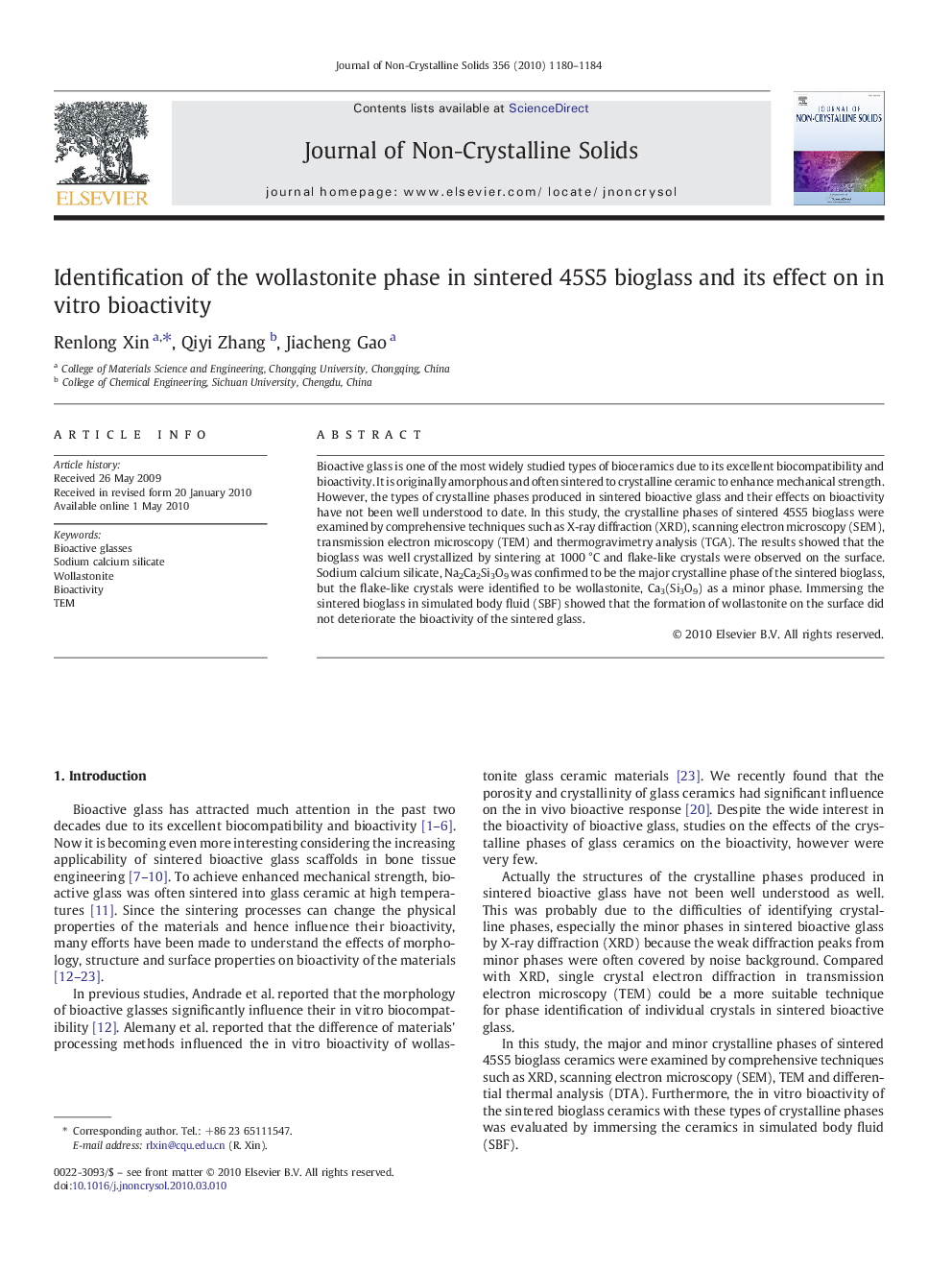| کد مقاله | کد نشریه | سال انتشار | مقاله انگلیسی | نسخه تمام متن |
|---|---|---|---|---|
| 1483427 | 1510496 | 2010 | 5 صفحه PDF | دانلود رایگان |

Bioactive glass is one of the most widely studied types of bioceramics due to its excellent biocompatibility and bioactivity. It is originally amorphous and often sintered to crystalline ceramic to enhance mechanical strength. However, the types of crystalline phases produced in sintered bioactive glass and their effects on bioactivity have not been well understood to date. In this study, the crystalline phases of sintered 45S5 bioglass were examined by comprehensive techniques such as X-ray diffraction (XRD), scanning electron microscopy (SEM), transmission electron microscopy (TEM) and thermogravimetry analysis (TGA). The results showed that the bioglass was well crystallized by sintering at 1000 °C and flake-like crystals were observed on the surface. Sodium calcium silicate, Na2Ca2Si3O9 was confirmed to be the major crystalline phase of the sintered bioglass, but the flake-like crystals were identified to be wollastonite, Ca3(Si3O9) as a minor phase. Immersing the sintered bioglass in simulated body fluid (SBF) showed that the formation of wollastonite on the surface did not deteriorate the bioactivity of the sintered glass.
Journal: Journal of Non-Crystalline Solids - Volume 356, Issues 23–24, 15 May 2010, Pages 1180–1184